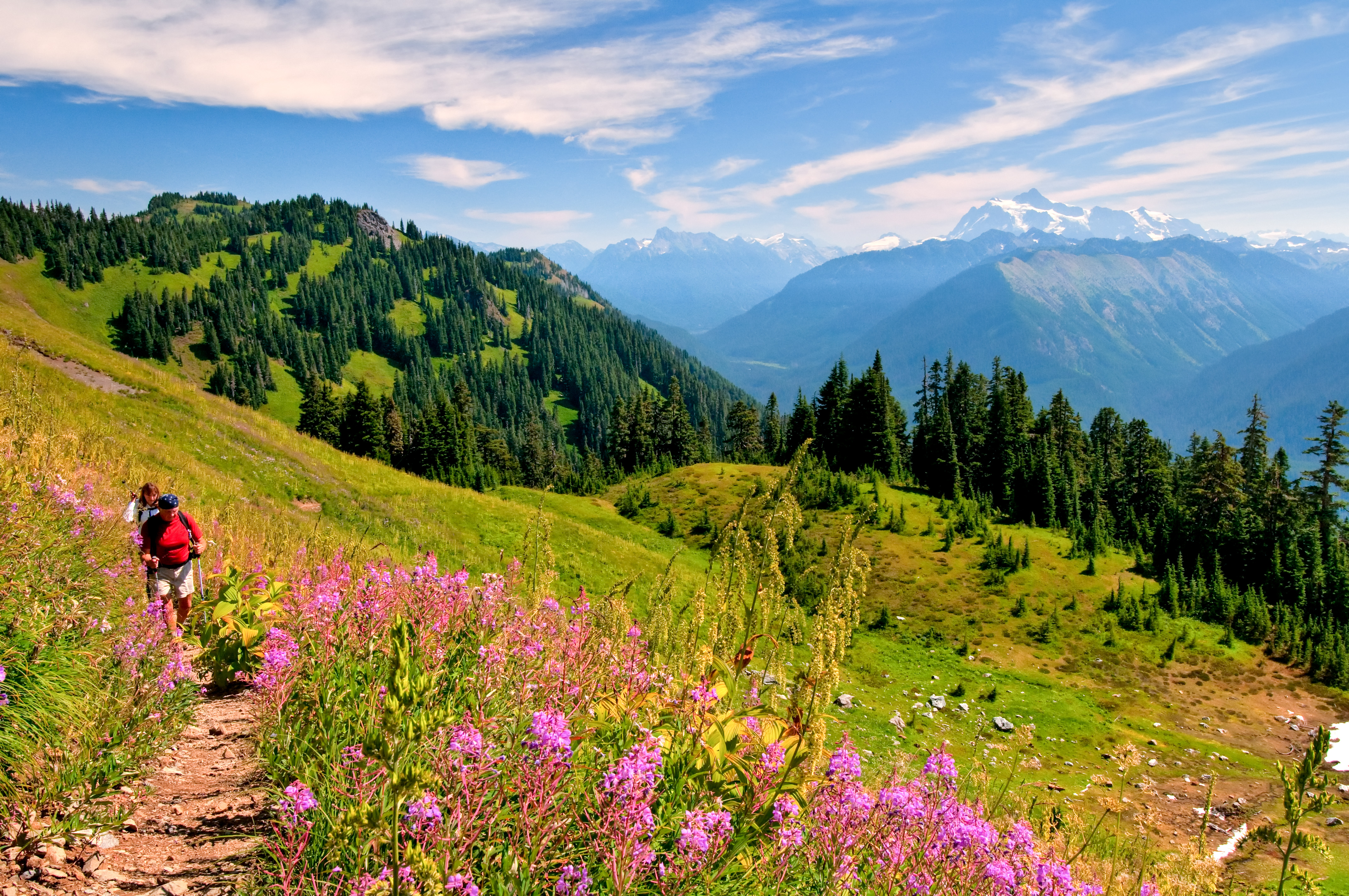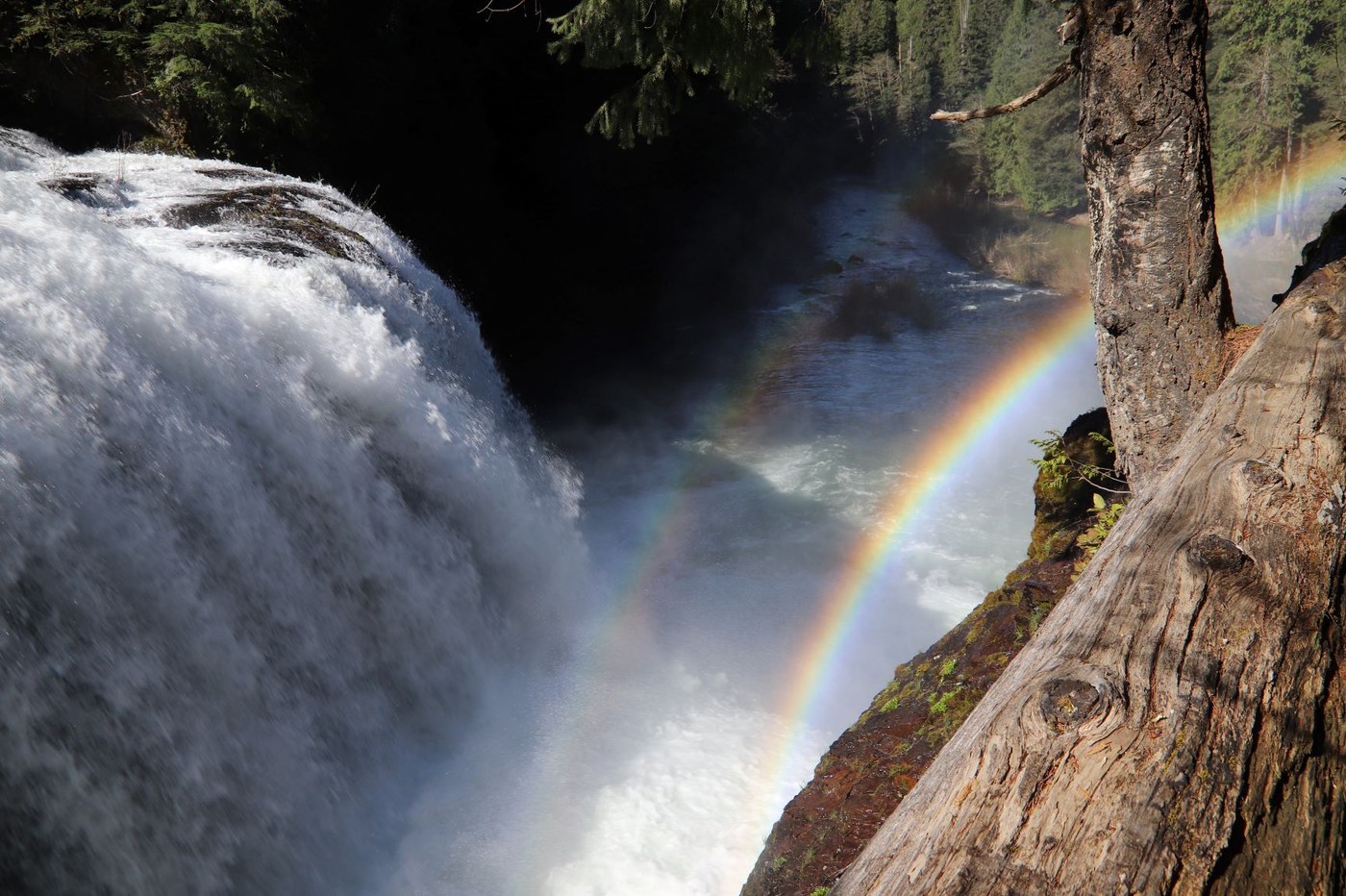45 million acres of national forest and 25,000 miles of trail could lose protection
For the past generation, one-third of our national forests, and more than 25,000 miles of trails, have been protected from development by the Roadless Rule. Now, the U.S. Department of Agriculture wants to remove this protection, opening 45 million acres (of 58 million acres that are currently protected) to road construction and activities like logging and mining. Speak up: take 30 seconds to ask that these places stay protected.
Update (Sept. 26, 2025): Over 3,900 hikers spoke up with WTA about saving the Roadless Rule and the 45 million acres of national forest and 25,000 miles of trail that it protects. Thank you! There will be further steps in the federal government's attempt to remove the Roadless Rule, and we’ll keep you posted every step of the way. These places provide irreplaceable benefits to all of us, including clean drinking water for communities across Washington and outstanding opportunities to get outside.
For the past generation, one-third of our national forests, and more than 25,000 miles of trails, have been protected from development by the Roadless Rule. Now, the U.S. Department of Agriculture wants to remove this protection, opening 45 million acres (of 58 million acres that are currently protected) to road construction and activities like logging and mining. Speak up: take 30 seconds to ask that these places stay protected.
In Washington, many Roadless areas protect old-growth forests that have never been logged. These places provide irreplaceable benefits to all of us, including outstanding opportunities for outdoor recreation.
"Hikers, along with our partners who represent mountain bikers, the sportsmen community and the small businesses that depend on our public lands, have told us in overwhelming numbers that Washington's Roadless areas are critical to keep protected," said Michael DeCramer, WTA's policy and planning manager.
 Beloved hikes across our state and country would lose protection. Photo of Church Mountain by J.B. Smith.
Beloved hikes across our state and country would lose protection. Photo of Church Mountain by J.B. Smith.
Roadless areas protect spectacular hiking and outdoor experiences
- The Roadless Rule protects some of our state’s most beloved outdoor destinations, including Washington Pass along Highway 20, Baker Lake, Lake Chelan, Quinault Lake, Silver Star Mountain and more.
- Roadless areas span Washington state’s six national forests. Check out this map from our partners at Outdoor Alliance.
- This change would affect 25,121 miles of trail nationally. You may be surprised to learn that your favorite hikes — or ones you have yet to discover — are in Roadless areas.
Drinking water for millions of Americans flows from national forests
- Clean water is one of the most important resources our national forests provide. Thirty-three percent of water in the American West flows through national forests, getting cleaned along the way. Wildlife depends on this clean water, but so do people.
- Nationally, 60 million Americans rely on national forests as their drinking water source.
- Activities that the Roadless Rule prevents, like road-building and timber harvesting, disturb the soil, adding sediment and pollution to our waterways.

Economic benefits for rural communities, small businesses and jobs
- Visitation to our national forests — including destinations protected by the Roadless Rule — boosts the economies of rural towns that are gateways to these public lands.
- Outdoor recreation contributes $1.2 trillion to the national economy, including $22.5 billion to Washington state’s economy.
- Outdoor activities support 120,000 jobs in our state, particularly benefiting small businesses and people’s livelihoods in rural communities.
Rights and lifeways of Tribal nations
- Public lands are a shared resource that Tribal nations have thousands of years of experience managing and stewarding. National forests protect natural and cultural resources that are critical to the lifeways of Tribal nations.
- Tribal nations are sovereign governments who must be consulted on this policy. Road construction will harm species like salmon that many Tribes rely on, and may damage sacred sites.

Investments needed in our existing road system
Forest roads are a portal to our national forests. They connect us to a variety of outdoor experiences — from barrier-free trails and family-friendly hikes to multi-day remote backpacking trips.
The existing 90,000 miles of forest roads in Oregon and Washington are not getting the resources they need so they can be maintained to be safe and drivable for the public. Have you ever encountered monster potholes or washouts driving to a trailhead at the end of a gravel forest road? Or have you chosen a hike, or changed hiking plans, based on road conditions?
Decades of underfunding for our existing forest road system is making areas of our national forests inaccessible to the public.
We need to invest in fixing and maintaining existing forest roads, not create roads in new areas of our national forests.
More roads could create more wildfires
Well-maintained roads can help firefighters respond to a wildfire by providing entry, but fires are also more likely to start in areas with roads (because that’s where people are). A 2020 study by the Forest Service's Rocky Mountain Research Station evaluated 20 years of data and reported that building roads does not improve fire prevention or forest health. Scientists who study forests and wildfires caution against building roads as a way to combat fires.
Take action to protect access to trails and forests protected by the Roadless Rule
Protecting our national forests means protecting hiking, trail access, clean water and towns across the state. For everything they provide, it benefits us to safeguard our national forests. Ask the U.S. Department of Agriculture to keep the Roadless Rule and its protection of 45 million acres of our forests.


Comments